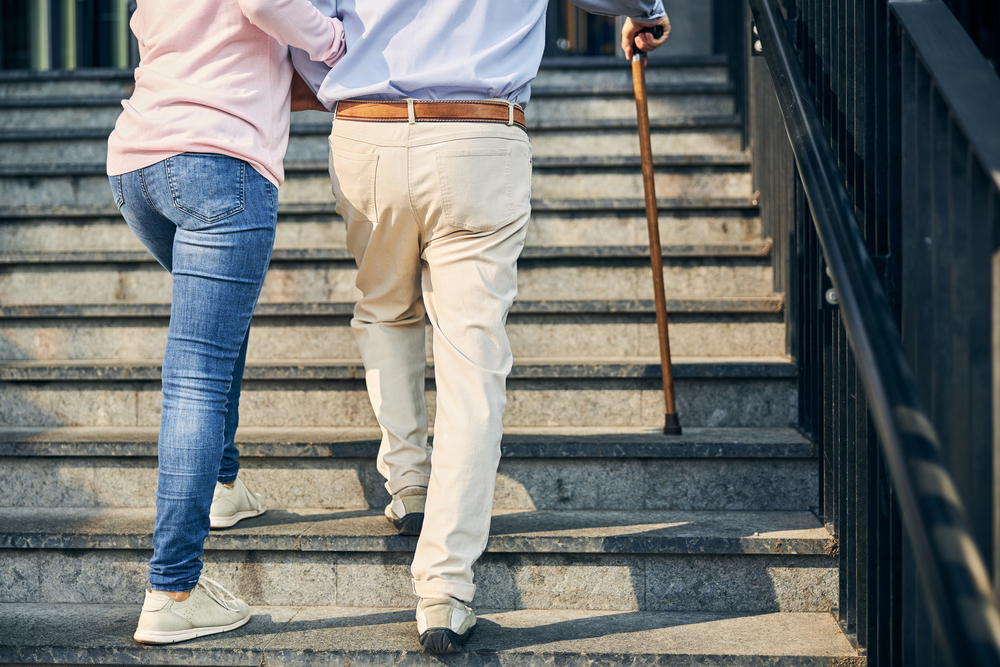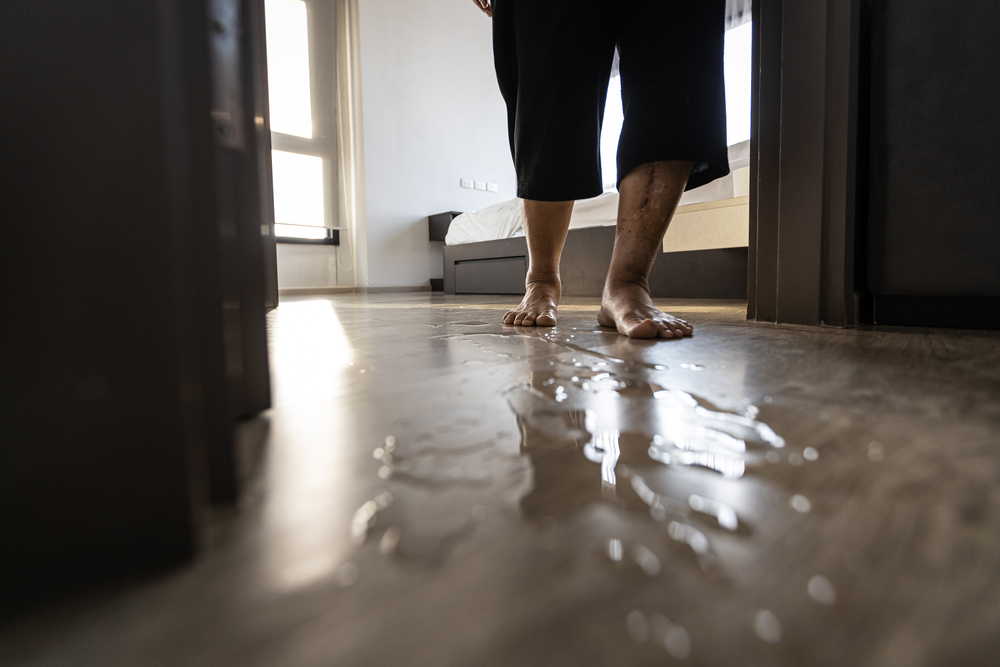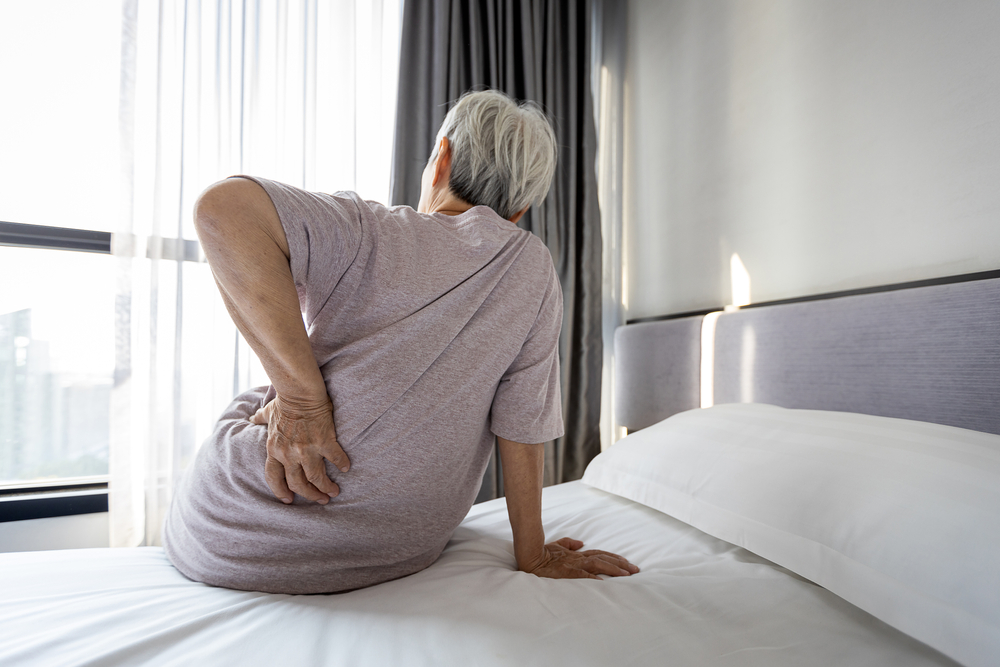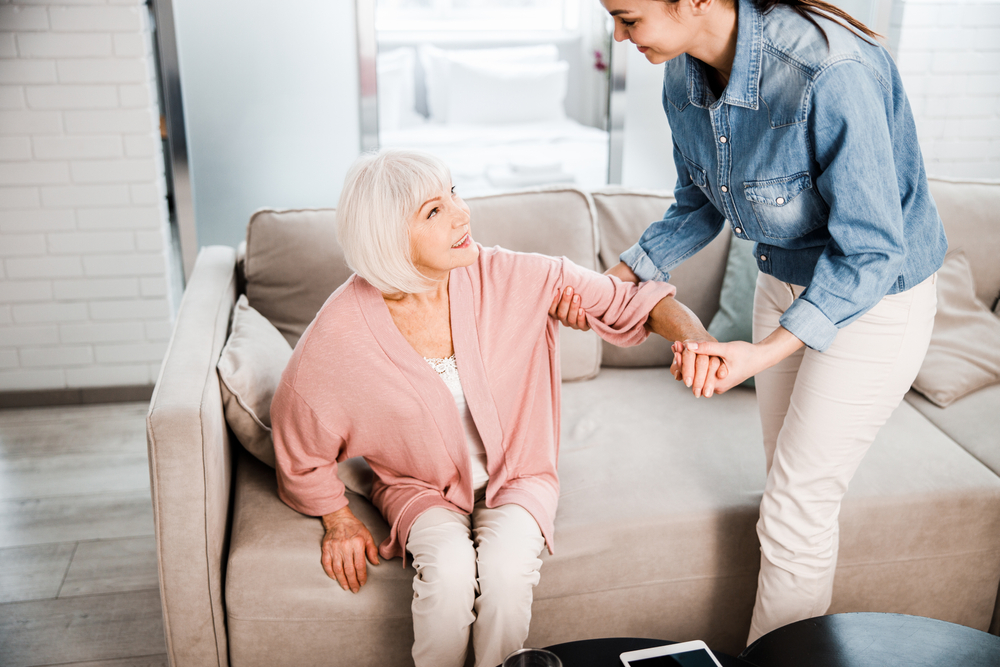How to Get an Elderly Person Up the Stairs
Category:

The stairs can be a dangerous place for an elderly person. As a caregiver, it is your responsibility to ensure that your loved one is safe while ascending or descending the stairs. While this may seem daunting, proactive safety measures and careful planning can help prevent accidents or injuries. Implementing proactive safety measures can help your loved one maintain their independence for a longer period.
How to Get Elderly Person Up Stairs
To help the elderly person upstairs, you will want to stand behind and on the side of them, holding the gait belt with one hand and supporting your loved one with the other. Your loved one should hold onto the stair railing with one hand and either use their cane or hold the other railing in the other hand. The elderly person should go up one step at a time, starting with their weaker leg, followed by the stronger leg, and then followed by the cane if they are using one.
If you need to assist an elderly loved one in going up the stairs, it is best to use a gait belt and a cane. A gait belt is a wide belt made of heavy material to help assist a weak or elderly person with tasks like transferring from bed to wheelchair, getting in and out of a car, and going up or down stairs. They should be wide enough that they will not dig into the skin if you have to suddenly grasp or pull your loved one.
How to Get Elderly Person Down Stairs
Similarly to going up the stairs, the elderly person should move one step at a time and lead with the weaker foot. You can use the gait belt again and make sure you are holding on securely. You can easily sit back on the stairs if your loved one needs to rest. Your loved one can also practice sitting down if they begin to lose their balance and fear they may fall forward.
Download Our FREE Joint Pain Remedy Guide
Making Stairs Safer for the Elderly
If you have an elderly loved one living in a home with stairs, it is important to take precautions to prevent accidents. Here are some measures you can take to make stairs safer for seniors.
- Removing clutter. Obstacles on the staircase are essentially a fall waiting to happen. Clothes, shoes, boxes, and cables should all be secured away from stairs. Loose carpeting should also be secured or removed entirely.
- Adding anti-slip material. It is less expensive than you think to add anti-slip material to the stairs. You can easily add stair treads that are made from tape, rubber, or carpet. For a more colorful option, try anti-slip paint. You may also want to consider fluorescent tape strips on the first and last steps, particularly if your elderly loved one struggles with vision.
- Adding handrails. Most staircases come with a handrail on one side, and adding a handrail on the other side as well can make a huge difference in offering your loved one stability and security.
- Using adaptive equipment. You may need to add half steps or blocks between steps to help your loved one climb more easily. You can also use a ramp or even have a chair lift installed to remove the need for climbing stairs altogether.
Getting an elderly person upstairs or helping an elderly person downstairs are challenging tasks, but they are manageable with practice and the right tools. Always ask for additional help if needed, and do not try to go up or down the stairs with your loved one if you do not both feel safe and secure.
Subscribe
Date: September 28, 2023
Category:


